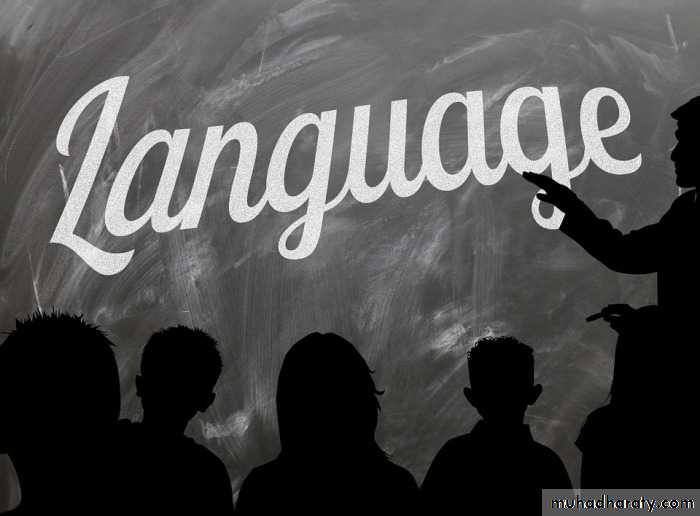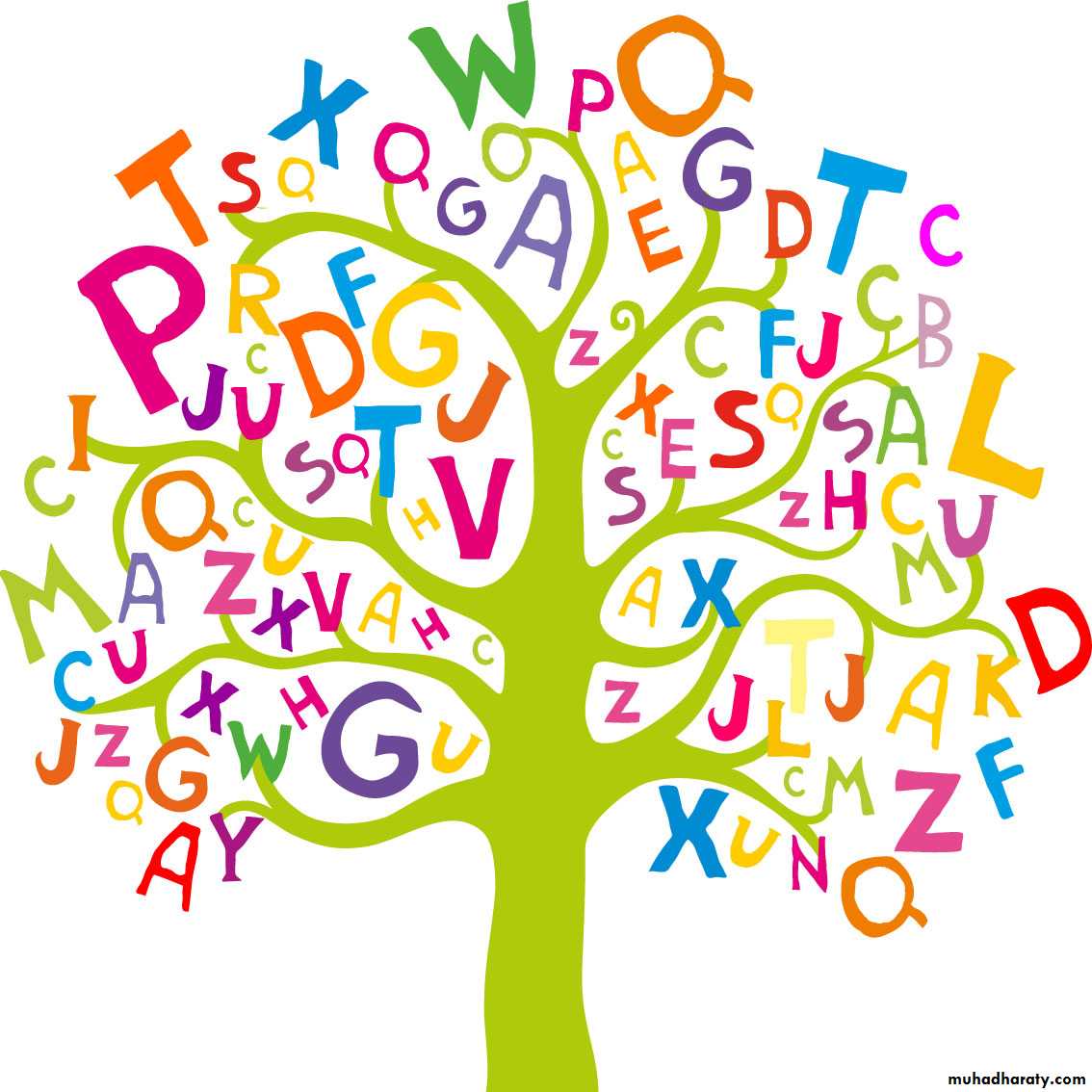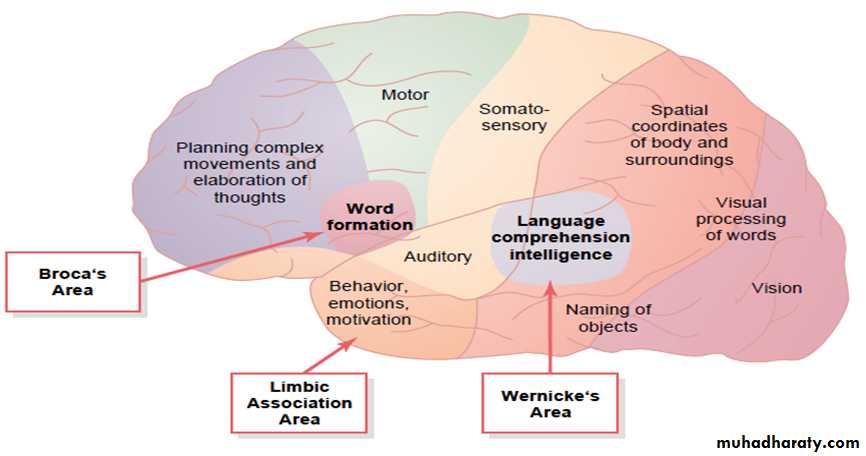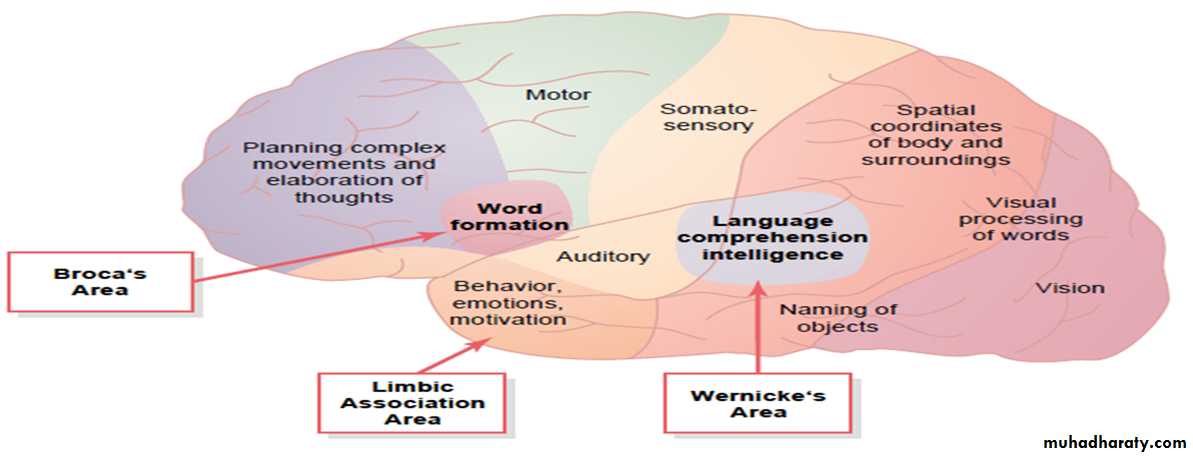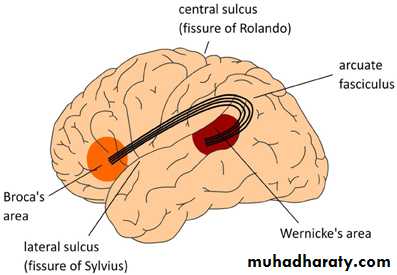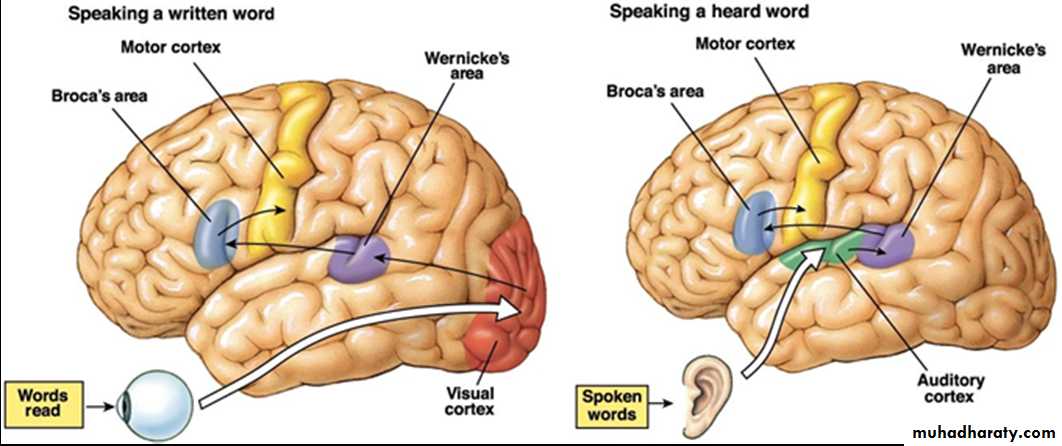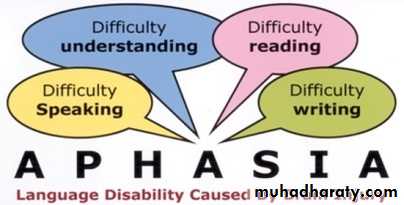Language and speech
Language and speech
• To learn language its very complicated we need to have:• 1-Normal Vision and visual pathway and occipital cortex
• 2-Normal Hearing and auditory pathway and temporal lobe
• 3-Normal brain
Area for Language Comprehension
called Wernicke’s area, lies behind the primary auditory cortex in the posterior part of the superior temporal lobe in the dominant hemisphere on the left side of the brain in almost all right-handed people (In about 95% of all people, the left hemisphere is the dominant one).It is the most important region of the entire brain for higher intellectual function which is called intelligence because almost all such intellectual functions are language based .
The somatic, visual, and auditory association areas all meet one another in this area
This region has been called by different names : the general interpretative area, the knowing area, the tertiary association area.
• Broca’s Area
A special region in the frontal cortex, for word formation.The information pass from Wernicke’s area to the Broca’s area through the arcuate fasciculus, then to the precentral gyrus to activate muscle responsible for articulation and movement like hand movement
the Broca’s area, is also almost always dominant on the left side of the brain.
These areas receive sensory information from both hemispheres and are capable also of controlling motor activities in both hemispheres.by the way of corpus callosum
•
•
•
•
•
There are two aspects for communication:
1-Sensory Aspects of Communication (language input)involving the information coming from the ears and eyes , to the association area and to the Wernicke’s area ,here the formation of he thoughts to be expressed as well as choice of words to be used
Aphasia is a communication impairment that affects all aspects of language, including speaking, understanding speech, reading, and writing
2-Motor Aspects of Communication. (language output) In the Broca’s Area that plans the motor patterns for expressing individual words or even short phrases are initiated involving motor control of vocalization Articulation.The speech area is responsible for formation of words by exciting simultaneously the muscles responsible for articulation,(as muscular movements of the mouth, tongue, larynx, vocal cords) , and the cerebellum, basal ganglia, and sensory cortex all help to control the sequences and intensities of muscle contractions.
Aphasia1-Sensory Aphasia 2-Motor Aphasia
• 1-Sensory Aphasia• destruction of portions of the auditory or visual association areas of the cortex can result in inability to understand the spoken word or the written word These effects are called, respectively, auditory receptive aphasia and visual receptive aphasia or, more commonly, word deafness and word blindness .
• Destruction of Wernicke’s :Some people are capable of understanding either the spoken word or the written word but are unable to interpret the thought that is expressed. This results most frequently when Wernicke’s area is damaged. Therefore, this type of aphasia is called Wernicke’s aphasia.
• 2-Motor Aphasia.
• Loss of Broca’s Area Causes Motor Aphasia. Sometimes a person is capable of deciding what he or she wants to say but cannot make the vocal system emit words . This effect, called motor aphasia• Global aphasia
• This is the most severe form of aphasia it is caused by injuries to Wernicke’s and Broca’s areas. Global aphasia may often be seen immediately after the patient has suffered a stroke or a brain trauma.
Function of the Corpus Callosum and Anterior Commissure
Fibers in the corpus callosum provide bidirectional neural connections between the two cerebral hemispheres except for the anterior portions of the temporal lobes; which are interconnected by anterior commissure.Cutting the corpus callosum
1. blocks transfer of information from Wernicke’s area of the dominant hemisphere to the motor cortex on the opposite side of the brain. lose control over the right motor cortex that initiates motor functions of the left hand and arm
2. prevents transfer of somatic and visual information from the right hemisphere into Wernicke’s area in the left dominant hemisphere.

